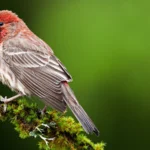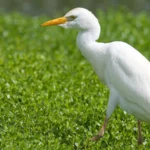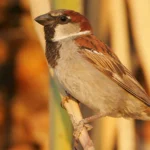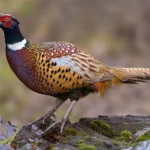Invasive birds first arrived in North America more than 400 years ago. Since then, a steady stream of introductions — both intentional and accidental — have swelled their ranks. Today, nearly 100 nonnative bird species have self-sustaining populations in the United States.
From Purple Swamphens, restricted to a small area of southeastern Florida, to European Starlings, found commonly throughout the U.S., the reach and impact of these birds varies widely.
The good news is that not all introduced birds cause extensive harm. But those that do — the ones most frequently called “invasives” — pose a range of serious threats. They devour crops, carry disease, and outcompete native birds for food, nesting sites, and breeding territories. Introduced House Sparrows, for example, will drive out — and even kill — native species such as Eastern Bluebirds when contending for nest boxes.
Controlling invasive birds is a necessity in certain situations, and some agencies have adopted anti-invasive policies. Some of the largest invasive bird populations, however, have receded over the last 50 years as avian declines have swept North America, resulting in a loss of more than 3 billion birds from the overall bird population.
Despite these dramatic losses, invasive birds are far from gone, and there’s no question that these adaptable newcomers will be with us for a long time.
Have a look at our list of seven of the most numerous and widespread invasive birds below.
European Starling

European Starling. Photos by Soru Epotok/Shutterstock
An admirer of Shakespeare released 60 European Starlings into Central Park in the 1890s in a misbegotten attempt to populate the American landscape with all birds celebrated — or at least mentioned — by the bard. Once established, these birds, which originally inhabited Europe, southwestern Asia, and North Africa, quickly spread.
Starlings now occupy all of the continental United States, and with a population of 46 million, they are among our most common songbirds. Even so, their numbers have dropped by more than half over the last 50 years.
It’s estimated that Starlings cause more than $800 million in crop damage each year in the United States. In addition, they often evict native birds from their nests, which has raised concerns about their impact on other species’ reproductive rates. They are also known to carry a variety of avian diseases (transmissible gastroenteritis, blastomycosis, and salmonella), and their droppings provide a growth medium for Histoplasma capsulatum, a fungus that causes lung infections in humans.
Rock Pigeon

Rock Pigeon. Photo by Jody Ann/Shutterstock
Rock Pigeons are native to Europe, North Africa, and parts of Asia. They arrived in North America with English colonists in the early 17th century and soon began their own colonization efforts, eventually reaching all of the continental U.S., much of Canada, and even parts of southern Alaska.
Despite the fact that Rock Pigeon populations have declined 46 percent over the last 50 years, they remain common in the U.S., with an estimated population of 8.4 million. Typically observed in cities or on farms, these birds thrive in human-altered landscapes.
Although there is little evidence that Rock Pigeons negatively impact native birds, they do carry a variety of parasites and pathogens, including avian influenza.
House Finch

House Finch. Photo by Robert L. Kothenbeutel/Shutterstock
Originally found in the western United States and Mexico, the House Finch was introduced in the eastern U.S. in 1939, when pet shop owners on Long Island released a group of the birds to avoid prosecution for their sale.
Their population rapidly grew and within 50 years the birds had colonized all of the eastern U.S. House Finches are now found countrywide, with a population exceeding 30 million. (They were introduced in Hawai’i around 1859.)
Like other invasive birds, House Finch numbers have been on the downturn. Since 1993, populations have declined 3 percent annually in the U.S. Still, they remain one of our most common backyard birds.
Thanks to their cheery song and bright colors, House Finches have received a better welcome than other invasive birds. They appear to have little impact on most other birds, although they may outcompete Purple Finches where the species overlap.
Cattle Egret

Cattle Egret. Photo by Michael Stubblefield
This adaptable heron is sometimes called an invasive species. However, since the bird arrived on its own via fair winds from Africa, it may more properly be called a colonizer. No matter what you call it, though, there’s no doubt that the Cattle Egret has become a very common species since it arrived in North America in 1941.
Now one of the most numerous of its tribe on the continent, the Cattle Egret is frequently seen in many southern U.S. states. Although its numbers declined by half over the last 50 years, the U.S. Cattle Egret populations still tops an estimated 1 million.
Cattle Egrets don’t seem to adversely affect native bird populations, and because they eat flies and occasionally ticks on or near cattle, they likely benefit the livestock industry. However, their colonies are sometimes viewed as nuisances due to their noise, smell, and proximity to human populations.
House Sparrow

House Sparrow. Photo by Greg Lavaty
House Sparrows were introduced in Brooklyn in 1851 as a means of controlling caterpillar populations and, thus, protecting the city’s basswood trees from Linden Moths. After several subsequent releases, this Old World songbird made the entire continental U.S. its home in less than 50 years.
Originally found in Europe and Asia, House Sparrows are now one of the most widely distributed birds in the world. In the U.S., they rank as one of the most common birds, with a population exceeding 7 million.
This number, however, is a far cry from the 1940s, when an estimated 150 million House Sparrows inhabited the country. The reason for their decline isn’t fully understood, although it appears that the industrialization of American farms may play a role.
Some farmers consider House Sparrows pests, and they are fierce competitors for nesting space, driving native species from nest boxes.
Eurasian Collared-Dove

Eurasian Collared-Dove. Photo by Dennis Jacobsen/Shutterstock
Eurasian Collared-Doves were first released into the wild during a pet shop burglary on the Bahamas in 1974. After reaching southern Florida in the 1980s, these large, pale doves went on to settle North America at a rate unmatched by other invasives.
Historically found from Turkey to Sri Lanka, Eurasian Collared-Doves now inhabit most of the U.S., although they remain largely absent in New England and the upper Midwest. Their U.S. population now numbers 400,000 and has been growing by nearly 37 percent annually.
Given that Eurasian Collared-Doves are recent arrivals, it’s still early to determine what, if any, impact they have on native birds. So far, the effect appears to be minimal, although that may change as they move north.
Ring-necked Pheasant

Ring-necked Pheasant. Photo by Tim Zurowski/Shutterstock
Initial attempts to introduce the Ring-necked Pheasant into the U.S. began in the 1730s, when several of these upland gamebirds were released by the governors of New York and New Hampshire. But it likely wasn’t until the 1880s that a self-sustaining population finally took hold in North America.
Aided by additional introductions in the following decades, the birds quickly spread, and by the 1930s pheasants were established throughout much of their current range, including the West, Great Plains, Midwest, and Atlantic states.
Originally inhabiting a vast swath of temperate Asia from the Black Sea to Korea and beyond, Ring-necked Pheasants have adapted well to North America, and more than 14 million are now found in the U.S. Their numbers, however, have declined by more than 30 percent over the last half century. The downturn is likely due in part to modern farm practices that have degraded habitat.
Ring-necked Pheasants have been known to harass other ground-nesting birds such as Greater Prairie-Chickens and Gray Partridges (also introduced), and female pheasants occasionally lay their eggs in the nests of these species.